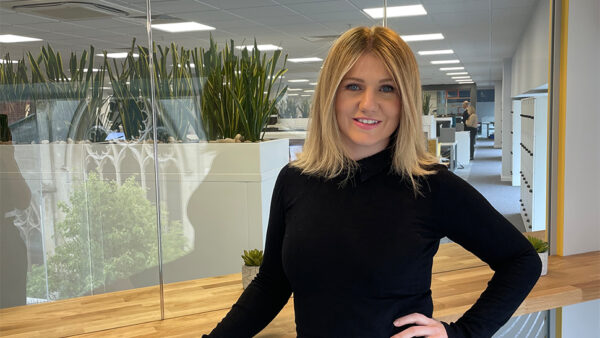

Family trusts have long been a feature of estate planning, a well-known means of passing on wealth to the next generation and reducing the taxable value of an estate. However, in recent years, perhaps as a result of negative press coverage and a less sympathetic tax regime for trusts, we’ve seen the rise in family investment companies (FICs) as an alternative to, or vehicle to be used in conjunction with, family trusts. In this article, we highlight the key advantages and disadvantages of both structures to help you determine whether either (or both) is suitable for you and your family.
Family trusts and family investment companies (FICs) defined
A family trust puts assets in the hands of new legal owners – the trustees – to hold on behalf of and manage for the benefit of a class of beneficiaries. The trust deed sets out the powers and duties of the trustees, essentially the rulebook of the trust. This can be very rigid, but most modern trusts are drafted flexibly, giving the trustees discretion over the management of trust assets and how and when to benefit the beneficiaries.
This article concentrates on the use of trusts in the context of lifetime planning, but trusts can also be created by a Will and provide the same advantages when planning the succession of assets on death.
A FIC is most often a private limited company, with day-to-day management carried out by the board of directors, usually the founders of the company. Family members (and possibly family trusts) become shareholders, with each typically holding different classes of shares, allowing varying degrees of control and entitlements to dividends and capital. Bespoke articles of associate and shareholders’ agreements set out the operating rules for the company, ensuring they are appropriate in the family context. Capital is introduced by subscribing for shares, making loans to the FIC, or a combination of both.
Very generally, trusts lend themselves to smaller funds or IHT-relieved assets and where flexibility and asset protection are key aims. FICs tend to be recommended for those with a very significant exposure to IHT, large cash deposits and who are more familiar with running companies.
The advantages of a family trust
Inheritance Tax (IHT)
By transferring assets into trust, and provided they do not retain a benefit, the settlor (the person funding the trust) ensures the assets are outside of their estate for IHT purposes. If the settlor survives seven years, the assets pass on free of IHT. However, if the settlor dies within seven years of the gift, the value of the gift (but, importantly, not any subsequent growth in the value of the asset) will be taken into account when calculating the IHT due on death. If any IHT becomes due as a result of the settlor’s death within seven years, taper relief can apply to reduce the tax if the settlor survives beyond three years from the gift.
Capital Gains Tax (CGT)
Usually, a gift of (non-cash) assets, which have increased in value over the course of ownership, will trigger a CGT charge. However, on transferring assets to the trustees of a trust, the settlor has the option to claim holdover relief. This ensures the trustees receive the assets at the settlor’s acquisition cost and defers any CGT charge until the trustees themselves dispose of the asset.
Control
If retaining control is a key objective, the settlor of the trust can become a trustee. In this role, together with any co-trustees, they retain control over the management of the trust assets. Decisions regarding how and when each beneficiary receives any benefit must be made unanimously by trustees, making the choice of co-trustees particularly important.
Asset protection
With a fully discretionary trust, the trustees are the legal owners and no beneficiary has the right to income or capital from a trust. Accordingly, trust assets are to an extent ringfenced against certain risks associated with outright ownership such as loss of assets on divorce, bankruptcy or the vulnerability (whether age- or disability-related) of a beneficiary. A trust is therefore particularly useful for reducing the value of an estate but without putting assets directly in the hands of the intended beneficiaries.
In comparison, shares issued in an FIC to family members are open to some of these risks, although certain protections can be included within the Articles and Shareholders’ Agreement.
Flexibility
Modern trusts are usually drafted widely to take into account a family’s changing circumstances. Often children, grandchildren and future generations are included within the class of beneficiaries, allowing trustees to manage the trust in the longer term and even for beneficiaries who are not yet born at the creation date.
In comparison, unless trusts are included within the corporate structure, future family members cannot be issued with shares in an FIC. In addition, the discretion available to the trustees allows them to be agile, providing for beneficiaries as and when required, taking into account their needs at the time.
The disadvantages of a family trust
Limitations on value
A major restriction on the use of trusts is the amount that can be added initially without incurring an immediate IHT charge. If a settlor transfers assets in excess of the Nil Rate Band amount (currently £325,000), taking into account any other gifts to trust made in the seven years prior, a tax charge at a rate of 20% is levied. Further tax may become due if the settlor dies within seven years of the transfer. Transfers into trust are therefore usually kept within the Nil Rate Band allowance. However, assets qualifying for IHT relief (Agricultural or Business Relief) can be transferred without triggering this initial IHT charge. Trusts are therefore often used as part of pre-sale or pre-development of relieved assets tax planning.
Ongoing taxation
Trusts are subject to the highest rates of income tax (45%) and capital gains tax (20/28%) and do not benefit from certain allowances that would otherwise be available to individuals, such as personal or dividend allowances, although steps can be taken to mitigate these charges. In addition, further IHT charges (at a maximum rate of 6%) can arise on every 10-year anniversary of a discretionary trust or on the distribution of assets to beneficiaries.
Ongoing administration
Trusts now need to be registered with HMRC’s Trust Registration Service, which must be reviewed on an annual basis. Further, annual trust tax returns and accounts must usually be filed. As well as the annual compliance, the trustees must regularly review the management of trust assets and consider the exercise of their powers.
The advantages of an FIC
IHT
A FIC can help to mitigate a family’s IHT exposure in a number of ways.
Firstly, when an FIC is formed, family members can be given shares in the company, or cash to subscribe for shares, of any value without incurring any immediate IHT charge (unlike trusts). Provided the founder survives seven years, the gifts will be outside their estate for IHT purposes. This option should be balanced against the risk of giving sums outright to family members and advice should be sough on the safeguards that can be implemented to mitigate against these risks.
Secondly, the class of shares issued to the founders often have limited rights to capital, ensuring the growth in the value of the FIC is attributable to other family members’ shares and outside the founders’ estates.
Thirdly, any minority shareholding retained by the founders will receive a discount on the founders’ deaths when valuing their interest. These discounts can be substantial. However, any loans made to the FIC on incorporation, will remain an asset of the founders’ estates and provide no immediate IHT advantage.
Control
Control can be retained by the founders by owning shares with voting rights in a number of ways. These include in their personal capacities or as the trustees of family trusts, through their roles as directors or through a carefully drafted Shareholders’ Agreement that sets out the directors’ powers and the shareholders’ rights. Founders should be mindful that if they retain shares in their personal capacities with all or the majority of voting rights, the value of the retained shares will be in excess of the nominal share value and will still be included within their taxable estates for IHT purposes.
Accumulation of wealth
An FIC is an efficient vehicle to retain profits and reinvest within the structure, particularly with respect to dividend income, which is exempt from Corporation Tax, making this an ideal entity to hold investments. All other profits are subject to Corporation Tax (currently 25% for companies with profits in excess of £250,000). Whilst Corporation Tax rates have increased in recent years, current rates are still lower than trust rates and high earners’ personal tax rates, allowing more income to be reinvested to generate further capital growth.
Return on investment
One of the primary methods of funding an FIC is via loans from the founder. This has an ancillary benefit of the founders being able to retain access to some of initial capital (unlike trusts), with a tax-free return on capital to the founders (provided the loan is interest-free) on repayment of the loan.
Familiarity
Trusts are often an unfamiliar concept. However, those who are used to running companies in their professional lives have a greater understanding of the terminology surrounding FICs and the requirements for the day-to-day management of such entities, often making them a more attractive proposition.
The disadvantages of an FIC
Introduction of assets
Structuring the initial transfer of assets into a FIC correctly is key. Existing property investment partnerships may qualify for incorporation relief, but any other transfer of property or non-cash assets will be a chargeable disposal for CGT purposes. If consideration is given by the FIC, Stamp Duty Land Tax is payable too (at higher rates) on the transfer. Companies holding UK residential property can also be subject to ongoing Annual Tax on Enveloped Dwellings charges. To avoid such charges, cash is usually the most suitable asset to introduce to a FIC, which requires the founders to have access to significant cash deposits.
Extraction of profits
Whilst an FIC is an efficient vehicle for accumulating profit, when looking to distribute those profits to shareholders by way of dividend, there is an element of double taxation. Corporation Tax is charged on (non-dividend) profits within the FIC and income tax is charged on the dividends paid to the shareholder. At current rates, this can result in an effective rate of tax of 53.6% on the extraction of profits.
Cost
FICs are bespoke structures, requiring professional advice from private wealth and corporate solicitors and specialist accountants to ensure they meet the clients’ objectives, whilst navigating a complex tax landscape. Accordingly, the initial start-up costs can be significant, certainly in comparison to trusts.
Lack of flexibility
Getting the FIC structure right from start (or soon after incorporation) is essential. Once the initial classes of shares have been issued, and the FIC increases in value or generates profit, any changes to share rights or share classes can have unintended tax consequences for the shareholders. Ensuring that the founders are happy with the classes of shares issued to family members at the outset is necessary.
HMRC scrutiny
HMRC has previously engaged a specialist unit to review FICs and whilst it concluded there was no correlation between those establishing FICs and non-compliant behaviour or tax avoidance, HMRC certainly pays close attention to the structure, funding and management of these entities. As such, professional advice is essential to ensure the structuring is compliant.
One size doesn’t fit all
Given the advantages and disadvantages of both options, one strategy can be a combination of both vehicles, alleviating some of the recognised downsides of either option. For example, family trusts are often included as shareholders in an FIC. This provides flexibility to benefit future generations of the family, greater protection for younger or more vulnerable family members and allows the founders to retain control without IHT implications for their estates.
However, every family has its own needs, objectives and particular circumstances to consider. Accordingly, there is no one-size fits all solution to estate planning. Both trusts and FICs can be effective means of managing the succession of assets within a family in a tax efficient manner.
As ever, professional advice is key: it ensures your family’s unique situation is considered at the outset and the best model, tailored to your circumstances, is implemented correctly.










